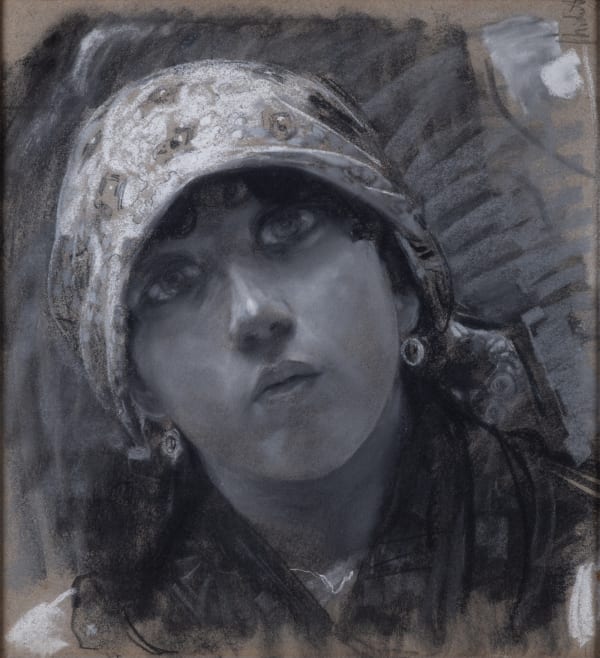
Philip Alexius de LÁSZLÓ Verona 1858-1942
Provenance
Germaine Gien (1895-1989) and Léon Bélugou (1865-1934) collection; private collection.Literature
Germaine Gien's recital programme at the de László House in London, ‘At Home’. Mrs. di Laszlo. reproduced on the cover. .
. With her hair slicked back and her lips picked out in carmine lipstick, the general appearance of this elegant woman typifies the clear-cut modernity of inter-war women. Germaine Gien (1895-1989) married Léon Bélugou (1865-1934) in 1919. It was to her husband, that the painter dedicated the portrait of his wife two years after their marriage. Gien was 26 at the time.
She had met Bélugou through her singing teacher, Lucienne Bréval (1865-1935), a world-famous singer in her day and a member of the Parisian and cosmopolitan high society so well described by Marcel Proust (1871-1922). Although she won first prize at the Conservatoire in 1917, Gien came from a modest background needed a protector. Bélugou was a well off man. He was a journalist, author and mining company director. Very well-connected, he was an intimate of Edith Wharton (1862-1937) and one of her famous ‘B's’, as she described her close friends who shared the same initial (Berenson, Blanche, Berry, etc.). Wharton mentioned the couple in one of her letters, pointing out that her friend Bélugou had a “tardy grande passion which doesn't agree with him - the object being 25 years” (H. Lee, Edith Wharton, London, 2013, p. 296). Gien would also refer to this notable age difference many years later, as historian Claudine Lesage recalls, to her: “age made no difference” (C. Lesage, Edith Wharton in France, Bristol, 2018).
Philip Alexius de László,a painter of European high society, appreciated mainly for his portraits in which he represented aristocrats, royals, and prominent figures of his time, here deviated in part from his more conventional works, distinguishing himself for an intimate quality and an emotional introspection. In this portrait, the artist adopted a less formal and more fluid painting style compared to his official portraits, with vibrant brushstrokes that suggest an atmosphere of free spontaneity and through which he explored a more personal, informal dimension. In her baggy shirt with its plunging neckline, and a modern androgynous hairstyle known as à la garçonne, muchin vogue in the Roaring Twenties, Gien embodies the emancipated modern woman.
de László combined traditional realism with elements of modernism, making his portraits not only faithful representations of his subjects, but also works with a contemporary visual language. Fluid and dynamic brushstrokes, an innovative use of light to accentuate the facial features and create a dramatic contrast between the figure and the background, the emotional exploration of the characters.
These elements of modernity in de László's portraits of 1921 distinguish him as a master capable of developing the language of classical portraiture towards an aesthetic more in tune with the cultural changes of his time.

Fig. 2 - Dame Helen Gwynne-Vaughan, 1910 c.
His works are present in the collections of prestigious international museums such as:
National Portrait Gallery (London), Royal Collection Trust (London), Hungarian National Gallery (Budapest), Musée d'Orsay (Paris), Metropolitan Museum of Art (New York), Uffizi (Florence), High Museum of Art (Atlanta, USA).


![Achille Funi, Sposa Araba [Arab bride], 1940 c.](https://artlogic-res.cloudinary.com/w_600,c_limit,f_auto,fl_lossy,q_auto/ws-artlogicwebsite0395/usr/images/artworks/main_image/items/c7/c7d973fceaed404ab8ea31e1ec149b90/al-fine-art-funi-sposa-araba.jpg)